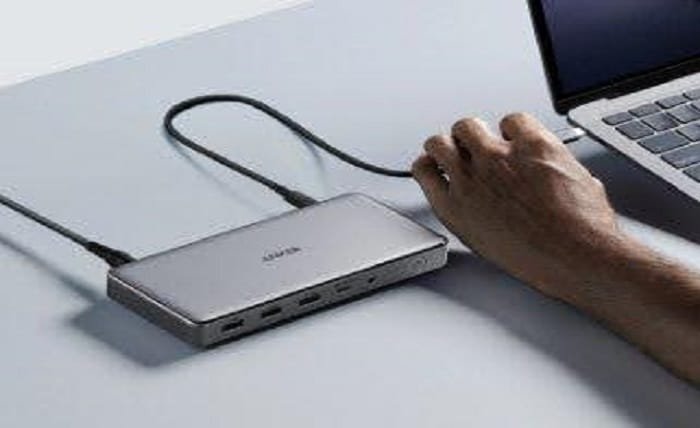Choosing the right docking stations begins with understanding your laptop’s specifications and requirements. Determine the types and numbers of ports on your device. Identify whether your laptop supports USB-C or Thunderbolt connections, as these are common interfaces for docking stations. Evaluate your power delivery needs, ensuring the docking station can adequately charge your laptop while connecting additional peripherals.
Ways of Choosing the Right Docking Station
Explore Connectivity Options
Docking stations primarily serve to expand the connectivity options of laptops, especially those with limited port availability. Consider what devices and peripherals you frequently use and ensure the docking station supports these connections. For instance, if you rely on dual monitors, ensure the docking station has multiple video output options such as HDMI and DisplayPort. The Anker 563 USB-C Docking Station is an exemplary product that expands your laptop’s connectivity by transforming a single USB-C port into multiple outputs. It includes two HDMI ports and one DisplayPort, which allows you to connect up to three monitors simultaneously. These features make it versatile for connecting various external devices such as keyboards, mice, external hard drives, and more. The efficient use of ports ensures you won’t have to constantly plug and unplug devices, creating a seamless and uninterrupted workflow.
Maximize Productivity with Multi-Monitor Support
One of the key advantages of modern docking stations is their ability to support multi-monitor setups, which significantly enhances productivity. With the Anker 563 USB-C Docking Station, you can unlock triple display functionality, particularly beneficial for professionals using an M1 MacBook. By connecting up to three monitors, each capable of displaying different content, multitasking becomes intuitive and efficient. This setup enables you to extend your desktop across multiple screens, offering more screen real estate for applications, documents, and tools. Whether you’re engaged in graphic design, data analysis, or software development, having multiple displays allows you to organize your workspace effectively, reducing the need to switch between tabs or windows frequently. Thus, multi-monitor support helps streamline workflows and improve focus, allowing users to manage complex tasks with ease by maintaining visual continuity and access to essential information at their fingertips.
Consider Power and Charging Capabilities
Power and charging capabilities are integral factors when selecting a docking station. A docking station should not only facilitate connections but also ensure that your laptop remains charged during use. The Anker 563 USB-C Docking Station offers robust power management features. It supports up to 100W charging for connected laptops, which is sufficient for fast-charging nearly any USB-C laptop on the market, including the latest MacBooks. This feature eliminates concerns about battery drain during demanding tasks, allowing users to remain productive without interruptions. Furthermore, the docking station includes a 30W USB-C Power Delivery port, enabling simultaneous charging of other devices such as smartphones, tablets, or accessories. By supporting high-speed charging, the docking station negates the need for separate chargers, reducing clutter on your desk.
Evaluate Design and Build Quality
When choosing a docking station, the design and build quality are significant considerations. A well-designed docking station should be compact yet robust, fitting neatly into your workspace without occupying excessive space. Look for materials that provide durability and stability, ensuring the dock remains intact with frequent use. The Anker 563 USB-C Docking Station exemplifies quality construction, tailored for durability while remaining lightweight for easy portability. Its sleek design makes it suitable for both office and home environments, complementing modern aesthetics. Additionally, consider thermal management features such as ventilation or passive cooling designs that prevent overheating, extending the lifespan of the station. Cable management is another aspect to consider, ensuring cables do not clutter your desk and remain organized. Adequate spacing between ports is crucial to facilitate easy connection and disconnection of devices without interference.
Conclusion
Consider the long-term benefits of investing in a reliable docking station like the Anker 563 USB-C Docking Station. Its wide range of ports, multi-monitor support, and robust charging capabilities offer substantial value, justifying the investment. Compare prices and reviews on reputable platforms to weigh their advantages against your budget constraints. Ensuring that the docking station meets current and future needs will provide a sustained return on investment, enhancing your workspace efficiency.

